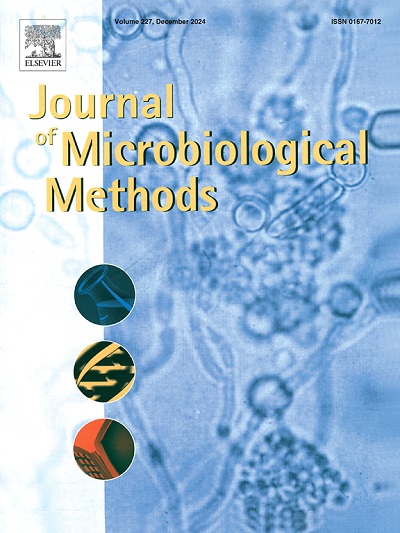Site-2蛋白酶样蛋白驱动橡胶红球菌的有机溶剂耐受性。
IF 1.9
4区 生物学
Q4 BIOCHEMICAL RESEARCH METHODS
引用次数: 0
摘要
在橡胶红球菌SD3中工程化过表达Site-2蛋白酶样蛋白(S2plp)可显著增强有机溶剂耐受性。通过电转化重组质粒pNV18-s2plp-s2plp,我们获得了在多种有机溶剂胁迫下生长优异的菌株。转录组学分析发现了13个显著上调的基因,包括编码氨基糖苷o -磷酸转移酶、复制起始蛋白、两个M50家族金属肽酶、转座酶、SMC家族atp酶、atp依赖性解旋酶、3个假设蛋白和3个小rna (sRNAs)的基因。KEGG分析将S2plp过表达与DNA修复机制增强联系起来,直接促进了有机溶剂耐受性。这些结果表明S2plp是一种新的分子靶点,可以提高这种重要细菌的溶剂弹性,从而提高其在生物催化和生物修复方面的潜力。本文章由计算机程序翻译,如有差异,请以英文原文为准。
Site-2 protease-like protein drives organic solvent tolerance in Rhodococcus ruber
Engineered overexpression of a Site-2 protease-like protein (S2plp) in Rhodococcus ruber SD3 significantly enhanced organic solvent tolerance. Through electro-transformation with the recombinant plasmid pNV18-s2plp-s2plp, we generated a strain exhibiting superior growth under multiple organic solvent stresses. Transcriptomic analysis identified 13 significantly upregulated genes, including those encoding aminoglycoside O-phosphotransferase, replication initiation protein, two M50 family metallopeptidases, transposase, SMC family ATPase, ATP-dependent helicase, three hypothetical proteins, and three small RNAs (sRNAs). KEGG analysis linked S2plp overexpression to enhanced DNA repair mechanisms, directly contributing to organic solvent tolerance. These results establish S2plp as a novel molecular target for boosting solvent resilience in this important bacterium, advancing its potential in biocatalysis and bioremediation.
求助全文
通过发布文献求助,成功后即可免费获取论文全文。
去求助
来源期刊

Journal of microbiological methods
生物-生化研究方法
CiteScore
4.30
自引率
4.50%
发文量
151
审稿时长
29 days
期刊介绍:
The Journal of Microbiological Methods publishes scholarly and original articles, notes and review articles. These articles must include novel and/or state-of-the-art methods, or significant improvements to existing methods. Novel and innovative applications of current methods that are validated and useful will also be published. JMM strives for scholarship, innovation and excellence. This demands scientific rigour, the best available methods and technologies, correctly replicated experiments/tests, the inclusion of proper controls, calibrations, and the correct statistical analysis. The presentation of the data must support the interpretation of the method/approach.
All aspects of microbiology are covered, except virology. These include agricultural microbiology, applied and environmental microbiology, bioassays, bioinformatics, biotechnology, biochemical microbiology, clinical microbiology, diagnostics, food monitoring and quality control microbiology, microbial genetics and genomics, geomicrobiology, microbiome methods regardless of habitat, high through-put sequencing methods and analysis, microbial pathogenesis and host responses, metabolomics, metagenomics, metaproteomics, microbial ecology and diversity, microbial physiology, microbial ultra-structure, microscopic and imaging methods, molecular microbiology, mycology, novel mathematical microbiology and modelling, parasitology, plant-microbe interactions, protein markers/profiles, proteomics, pyrosequencing, public health microbiology, radioisotopes applied to microbiology, robotics applied to microbiological methods,rumen microbiology, microbiological methods for space missions and extreme environments, sampling methods and samplers, soil and sediment microbiology, transcriptomics, veterinary microbiology, sero-diagnostics and typing/identification.
 求助内容:
求助内容: 应助结果提醒方式:
应助结果提醒方式:


